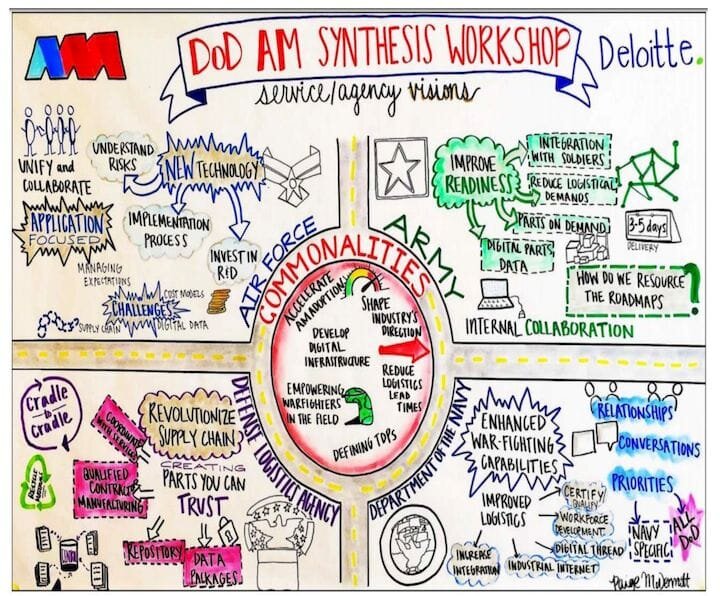![Pictorial characterization of the Department of Defense Roadmap representing various branches of the armed forces and America Makes public-private partnership. [Source: James Martin Center for Nonproliferation Studies]](https://fabbaloo.com/wp-content/uploads/2020/05/dodandamericamakes_img_5eb09031b8f3b.jpg) Pictorial characterization of the Department of Defense Roadmap representing various branches of the armed forces and America Makes public-private partnership. [Source: James Martin Center for Nonproliferation Studies]
Pictorial characterization of the Department of Defense Roadmap representing various branches of the armed forces and America Makes public-private partnership. [Source: James Martin Center for Nonproliferation Studies]
I’m reading a rather sensational story on Forbes about the possibility of 3D printing weapons of mass destruction.
Sensationalized 3D Printing
In the years I’ve been writing for this publication, I have witnessed countless stories from mass media that incorrectly extrapolate the technology of 3D printing into areas of silliness that could not possibly occur, or into areas of concern that already exist. Many times I hear people worrying that “3D printers could print guns”, when in fact there are probably 10x as many metal CNC machines in their same city that could easily produce guns.
And they would actually work.
Somehow they are concerned about 3D printers but not about machines that can already do worse.
The Forbes story, written by Elizabeth Fernandez, PhD, refers to a document produced by Negotiation Design & Strategy (NDS), entitled, “WMD Capabilities Enabled By Additive Manufacturing”. It’s a long piece of some 80 pages. I took a scan through it to see if there was any merit to this claim.
I noted that the contributing authors of the study appeared to all be policy types, and none were additive manufacturing experts, and in fact only one author’s bio even mentioned the technology. But regardless, if they have a good idea, it’s a good idea.
3D Printing Weapons of Mass Destruction?
I’ll spare you the extensive details of the report, but essentially they are saying that today’s industry and research organizations are incrementally developing better ways to manufacture, well, anything, using new technologies. And this could include weapons.
Their concern is that bad actors could somehow do the same thing: make weapons easier. Some of these weapons are a bit more serious than guns, such as missiles.
The authors are basically correct: if technology exists to produce things more easily, weapons could be produced more easily. They cite numerous examples of technology components that could be made better, faster or cheaper using advanced technologies.
They are especially interested in the combination of 3D printing and artificial intelligence / machine learning, where the two can be used to generate unusual and efficient components. We’ve written on generative design technology many times, and it is certainly going to be very important for future manufacturing.
Additive Manufacturing Export Policies
The policy folks are wondering how to stop bad actors from gaining access to this technology. They say that 3D print service bureaus might mistakenly produce weapons components for clients, for example. That might happen.
It’s unlikely in my opinion that significant additive manufacturing self-production by bad actors could take place, at least in the near future. The reason for my thought is that metal 3D printing is required, and that process currently takes a considerable investment in equipment, facilities, materials, process, controls and especially knowledgeable engineers.
That’s unlikely to take place unless a state or major company sponsors the activity. Just consider the costs of setting up a relatively small metal 3D printing service today: many millions of US$ would be required. That’s a bit of a barrier if I have ever heard of one.
Nonproliferation or Progress?
In my opinion, this is a losing game because you cannot hold back technology forever, particularly one that is as universally applicable — and beneficial — as 3D printing.
Technologies are just tools; like atomic power, they can be used for good or evil. It’s not the technology’s fault, that instead lies in the motivation of the user.
Perhaps a better approach to solve the problem could be by addressing the conditions that lead to motivations of bad actors rather than attempting to control a useful technology’s progress through society.
What are your thoughts?
Via Forbes and James Martin Center for Nonproliferation Studies (PDF)

